If the vacuum booster fails, the force on the brake pedal increases significantly, which negatively affects driving.
If the effort on the pedals during braking has noticeably increased compared to normal, check the brake booster with the vehicle stationary.

1. With the engine off, press the brake pedal five or six times with an interval of about 5 seconds; while holding the brake pedal down, start the engine - the brake pedal should move forward. If it doesn't, check...
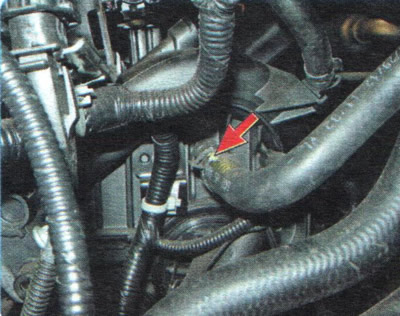
2.... the integrity and reliability of the connection of the vacuum booster hoses with the fitting on the engine intake pipe...

3....with two-way valve...

4....and with a fitting on the vacuum pump.

5. To check the operation of the non-return and two-way valves, press the retainer of the two-way valve wiring harness block...

6.... and disconnect the block from it.

7. Loosen the clamp fastening to the two-way valve of the hose to the inlet pipe, squeezing its bent ears with pliers...

8....slide the clamp over the hose...
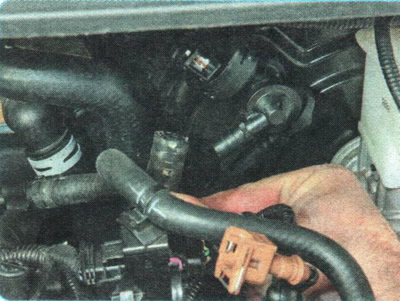
9.... and disconnect the hose from the valve fitting.
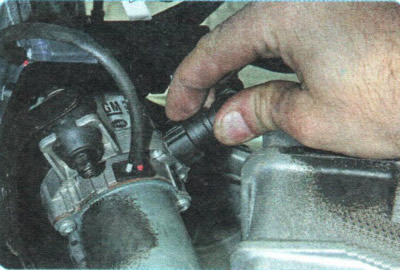
10. Squeeze the clamps of the hose tip to the vacuum pump...

11.... and disconnect the hose from the pump fitting.

12. Remove the two-way valve from the hole in the sealing sleeve of the vacuum brake booster...

13.... and remove the combined hose.
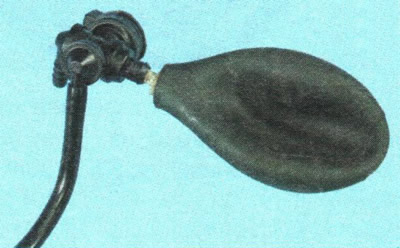
14. To check the non-return valve, firmly insert the spout of the pear into the fitting of the two-way valve and squeeze it. The air from the pear should exit through the valve. Release the pear. If it remains in a compressed state, then the valve is working. In the absence of a pear, you can purge the valve with your mouth.
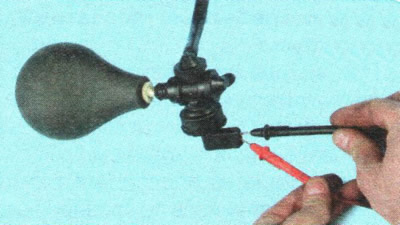
15. To test a two-way valve, apply 12 V DC to its terminals. The valve should open and the bulb will straighten.
16. If the check valve lets air through in both directions or the two-way valve does not open when power is applied to it, replace the vacuum hose assembly with valves, as its design is not separable.
